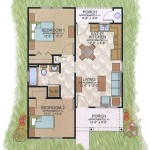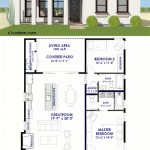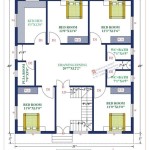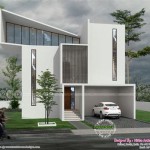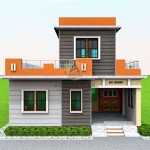2nd Floor House Plans Design and Build: Your Dreams Realized in PDF
The allure of expanding living space often leads homeowners to consider adding a second story to their existing dwelling or incorporating a second floor into new construction. This process begins with meticulous planning and design, often facilitated by 2nd floor house plans readily available in PDF format. These plans serve as blueprints for realizing architectural aspirations, providing a detailed roadmap for construction and ensuring a successful build.
The availability of 2nd floor house plans in PDF format offers several benefits to homeowners and builders alike. This digital format allows for easy sharing, printing, and modification. PDFs maintain the integrity of the design, preventing alterations and ensuring compatibility across different devices. Furthermore, readily accessible online resources provide a vast library of 2nd floor house plan designs, catering to various architectural styles, spatial requirements, and budgetary considerations.
Successfully designing and building a second floor requires careful consideration of various factors, including structural integrity, building codes, aesthetic considerations, and the homeowner’s specific needs. The choice of materials, the layout of rooms, and the integration of mechanical systems all play a crucial role in creating a functional and aesthetically pleasing living space. Accessing and understanding 2nd floor house plans in PDF format is the first step towards realizing this vision.
Key Considerations Before Designing Your 2nd Floor
Before diving into the specifics of 2nd floor house plans, several critical considerations must be addressed to ensure a smooth and successful project. These considerations can save time, money, and potential headaches down the line.
Existing Structure Assessment: A thorough assessment of the existing structure is paramount. A structural engineer should evaluate the foundation and existing walls to determine their load-bearing capacity. This assessment will reveal whether the current structure can support the additional weight of a second floor or if reinforcement is required. This information is crucial for selecting appropriate materials and designing the framing for the new level. Ignoring this step can lead to structural instability and costly repairs in the future.
Building Codes and Permits: Familiarizing oneself with local building codes and obtaining the necessary permits is non-negotiable. Building codes regulate various aspects of construction, including structural requirements, fire safety regulations, and energy efficiency standards. Failure to comply with these codes can result in fines, delays, and even the demolition of non-compliant structures. Consulting with a local building inspector or architect can help navigate the permitting process and ensure that the design meets all applicable regulations.
Budgeting and Cost Estimation: Developing a realistic budget is essential to avoid financial strain during the construction process. Costs associated with adding a second floor can vary significantly depending on the size of the addition, the complexity of the design, the choice of materials, and the labor costs in the local area. Obtaining multiple quotes from qualified contractors and factoring in a contingency fund for unexpected expenses is highly recommended. A detailed cost breakdown will help track expenses and make informed decisions throughout the project.
Decoding 2nd Floor House Plans in PDF Format
Understanding the various components of a 2nd floor house plan in PDF format is crucial for effective communication with architects, engineers, and contractors. These plans typically include a variety of drawings and specifications that detail the layout, dimensions, materials, and finishes of the proposed second floor.
Floor Plans: Floor plans are top-down views of each level of the house, showing the arrangement of rooms, hallways, and other spaces. They indicate the dimensions of each room, the location of doors and windows, and the placement of fixtures such as toilets, sinks, and appliances. Studying the floor plans carefully helps visualize the flow of space and identify potential issues with the layout before construction begins.
Elevations: Elevations are exterior views of the house, showing the appearance of the building from different angles. They depict the roofline, the placement of windows and doors, and the exterior finishes. Elevations help visualize the aesthetic impact of the second floor on the overall appearance of the house and ensure that it complements the existing architecture.
Sections: Sections are cut-through views of the house, showing the interior structure and the relationship between different floors. They reveal the height of ceilings, the thickness of walls, and the location of mechanical systems such as ductwork and plumbing. Sections provide valuable information for understanding the structural integrity of the building and the placement of essential building components.
Details: Details are close-up views of specific building elements, such as window and doorframes, staircases, and roof overhangs. They provide detailed information about the materials, construction methods, and finishes used in these areas. Details are essential for ensuring that the construction is carried out according to the design specifications and that the finished product meets the desired aesthetic and functional requirements.
Schedules: Schedules are tables that list the specifications for various building components, such as doors, windows, and finishes. They provide information about the size, type, material, and manufacturer of each item. Schedules ensure that the correct materials are ordered and installed during construction.
Harnessing the Power of PDF Software for Design and Collaboration
PDF software offers a range of tools that can enhance the design and collaboration process when working with 2nd floor house plans. These tools allow users to annotate, mark up, and share plans electronically, facilitating communication and ensuring that everyone is on the same page.
Annotation and Markup Tools: PDF software typically includes a variety of annotation tools that allow users to add comments, highlight text, draw shapes, and insert stamps directly onto the plans. These tools are invaluable for marking up plans with notes, questions, and revisions. Annotations can be easily shared with other stakeholders, such as architects, engineers, and contractors, ensuring that everyone is aware of the changes and corrections.
Measurement and Scaling Tools: Accurate measurements are crucial for construction. PDF software often includes measurement tools that allow users to measure distances, areas, and angles directly on the plans. These tools can be calibrated to the scale of the drawing, ensuring that the measurements are accurate. This functionality significantly reduces the risk of errors during construction.
Collaboration Features: Many PDF software programs offer collaboration features that allow multiple users to work on the same plan simultaneously. These features enable real-time communication and feedback, streamlining the review process and ensuring that everyone is aligned on the design. Collaboration features can significantly reduce the time it takes to complete the design and construction process.
Digital Signatures and Security: For securing the integrity of the plans, PDF software allows for the implementation of digital signatures. This ensures authenticity and confirms that the document has not been tampered with since it was signed. The use of password protection on PDF files is also critical when sharing sensitive information, ensuring only authorized personnel can access the files.
Beyond these key elements, consider the orientation of the second floor addition. Maximize natural light access through strategic window placement and consider the sun's path throughout the day. Furthermore, pay attention to ventilation systems. Integrating efficient HVAC systems into the design is paramount for maintaining comfortable temperatures and air quality. Smart home integration should also be considered during the planning phase. Integrating features, such as smart lighting and security systems, requires careful planning and wiring considerations.
Careful consideration of these points, coupled with a clear understanding of the 2nd floor house plans in PDF format, sets the stage for a successful expansion project. It's a complex but rewarding endeavor that can significantly enhance the functionality and value of the home.

Custom 2 Story Houses New Two Home Plans Housing Development D

Free Simple Two Story House Plans

Farm House Style Plan 9576 Nikolas 2

Free Simple Two Story House Plans

Free Simple Two Story House Plans

Luxury Narrow Lot Modern Style House Plan 1379 Serra

Find The Perfect 2 Y Custom Home Blueprints For You And Your Family

Modern Style House Plan 2 Beds Baths 1188 Sq Ft 23 2719 Dreamhomesource Com

Free Home Plan American Design Concepts

The Overlook House Plan Two Story Contemporary
Related Posts

